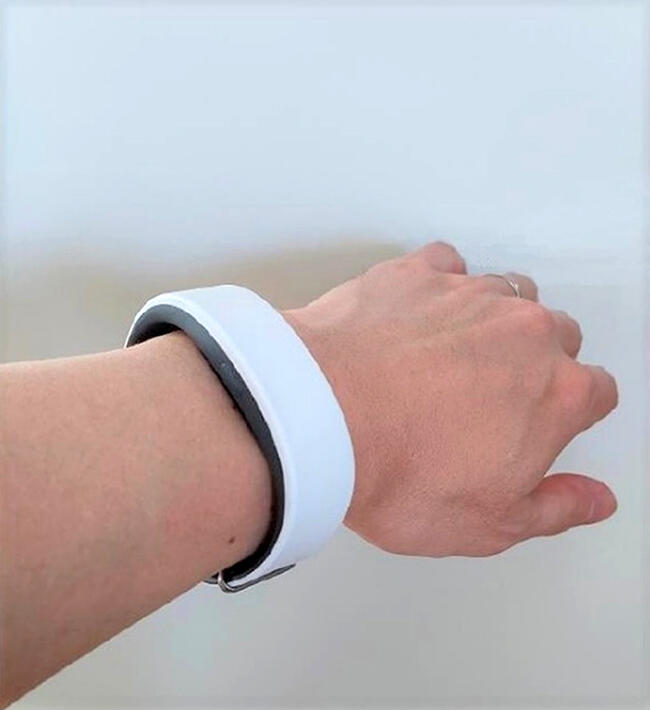The research group comprising Professor Hiroki Ueda, Lecturer Koji Ode, and others from The University of Tokyo Graduate School of Medicine successfully developed a data analysis algorithm, "ACCEL," that accurately determines whether a person is asleep or awake from information on arm movements that can be measured using a wristwatch-type wearable device. In the development of an approach to determine whether a person is sleeping or awake, many of the methods so far have had problems related to sensitivity (ratio of determining the sleep state as sleep) being high, but specificity (ratio of determining the awake state as awakening) being less accurate when determining the sleep state.

Provided by The University of Tokyo
With this background in mind, the research team proceeded with the development of an algorithm for sleep determination with both high sensitivity and specificity. First, the group created a simple wristwatch-type wearable device equipped with an accelerometer to keep track of the raw data. Next, the group asked the subjects to wear the device and PSG (polysomnography) measuring device at the same time and were subjected to recordings for an entire night in the sleep measuring room.
As a result, the acceleration of the arm was measured at each measurement time, and concurrently, the PSG measurement result was used to determine whether the subject was in a sleeping state or a wakeful state at each of these instants. In addition, using machine learning, the group searched for a method to obtain sleep-wake judgments that match the judgments based on PSG measurement as closely as possible from only the arm acceleration data. Based on the results of the examination, it was found that accurate sleep awakening can be determined by using the differential value (jerk) of the triaxial acceleration obtained from the wearable device and further using XGBoost (machine learning method). ACCEL showed a high value of 90% or more with respect to the sensitivity of sleep judgment. Furthermore, regarding the specificity of sleep determination, which was a problem encountered with the conventional methods, a high value of 80% or more was obtained.
From this, ACCEL can not only determine sleep with a high probability when the subject is in a sleep state but can also determine wakefulness with a high probability. By observing the jerk data in detail, it was found that periodic jerk fluctuations of approximately 1 Hz were detected when there was little arm movement, such as the sleep state. A comparison with the biological signal acquired by PSG measurement revealed that this periodic jerk variation is in good agreement with the pulse wave. The sleep of mammals, including humans, is roughly divided into non-REM sleep, which occupies most of the sleep time, and REM sleep, which has characteristics close to wakefulness. It is known that pulse waves show greater fluctuations during REM sleep than during non-REM sleep. It was also found that the periodic jerk observed this time changed significantly during REM sleep rather than during non-REM sleep.
According to Lecturer Ode, "ACCEL, which has both high sensitivity and specificity for sleep judgment, understands the state in which a person sleeps lightly and wakes up many times during sleep, that is, the deterioration of sleep quality that does not necessarily lead to changes in total sleep time; this contributes to more effective sleep health management. Because it is possible to obtain information about the movement of the arm required for ACCEL using only an accelerometer worn on the arm, it may be applicable to various wearable devices. It is expected to develop and be applied as an elemental technology for simple and accurate recording of daily sleep habits."
This article has been translated by JST with permission from The Science News Ltd.(https://sci-news.co.jp/). Unauthorized reproduction of the article and photographs is prohibited.




